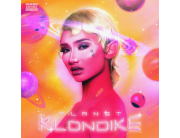During the Edwardian era, makeup for women was used to enhance natural beauty and many young women applied light face powder on a daily basis. Influenced by traditional beauty standards, women preferred pale, whitened, and powdered skin throughout the early 1900s. However, in the 1920s, Hollywood became the main inspiration for beauty in America.
Due to growing popularity, the end of the decade saw a rise of cosmetic brands with over 1300 brands of face powder, which eventuated in a 52-million-dollar industry. Early makeup developers including Elizabeth Arden and Helena Rubinstein produced skin care products and powders that attracted an international market. Cosmetics for women of color during this time were also in production, with the first face powder for African-American women created by Anthony Overton in 1898, called the High-Brown Face Powder.
Overton made multiple darker tones of face powder with product names including “nut-brown”, “olive-tone”, “brunette” and “soft-pink”, and by 1920, his sales earned him a Dun and Bradstreet Credit rating of one million dollars. Other African-American entrepreneurs also marketed cosmetics despite discrimination during the Jim Crow era, including Annie Turnbo Malone who sold face powder in darker shades which developed into a multi-million dollar business. Businesswoman Madam C. J. Walker retailed face powders for African American women in drugstores.
Hungarian- American businessman Morton Neumann established his own cosmetic company in 1926, Valmor Products Co., and marketed darker-toned face powders for black women which retailed for 60 cents each. By 1977, cosmetics for black women became a $1.5 billion industry, with darker shades of powders, foundation, and lipsticks available in stores around the USA. By the 1990s, face powder became a staple cosmetic product for not only concealing blemishes but setting makeup in place. The Australian Government’s National Industrial Chemicals Notification and Assessment Scheme was established in 1990 to ensure that industrial chemicals are not used in face powders.
The changing conceptions of masculinity during the 2000s led to evolving beauty trends that saw cosmetic products sold to men including facial scrubs, face powders, and eye shadow. The use of face makeup has expanded to include males who desire an enhanced look, using face powder to achieve a chiseled complexion. As cosmetics in contemporary society are diverse in shade range options, modern face powder enhances natural skin tones and most brands cater to all skin types.
21st-century cosmetic trends are heavily influenced by beauty icons and the face powder application technique known as ‘baking’ has been popularised by socialite Kim Kardashian West. Baking involves patting translucent face powder under the eyes, the ‘T’ zone, beneath the cheekbones, along the jawline, and on the sides of the nose, allowing it to sit for a few minutes while the foundation is absorbed by the skin’s body heat, then brushing it off. This technique creates a pore-less and creaseless look that is a desired make-up beauty standard in modern times.







Add Comment